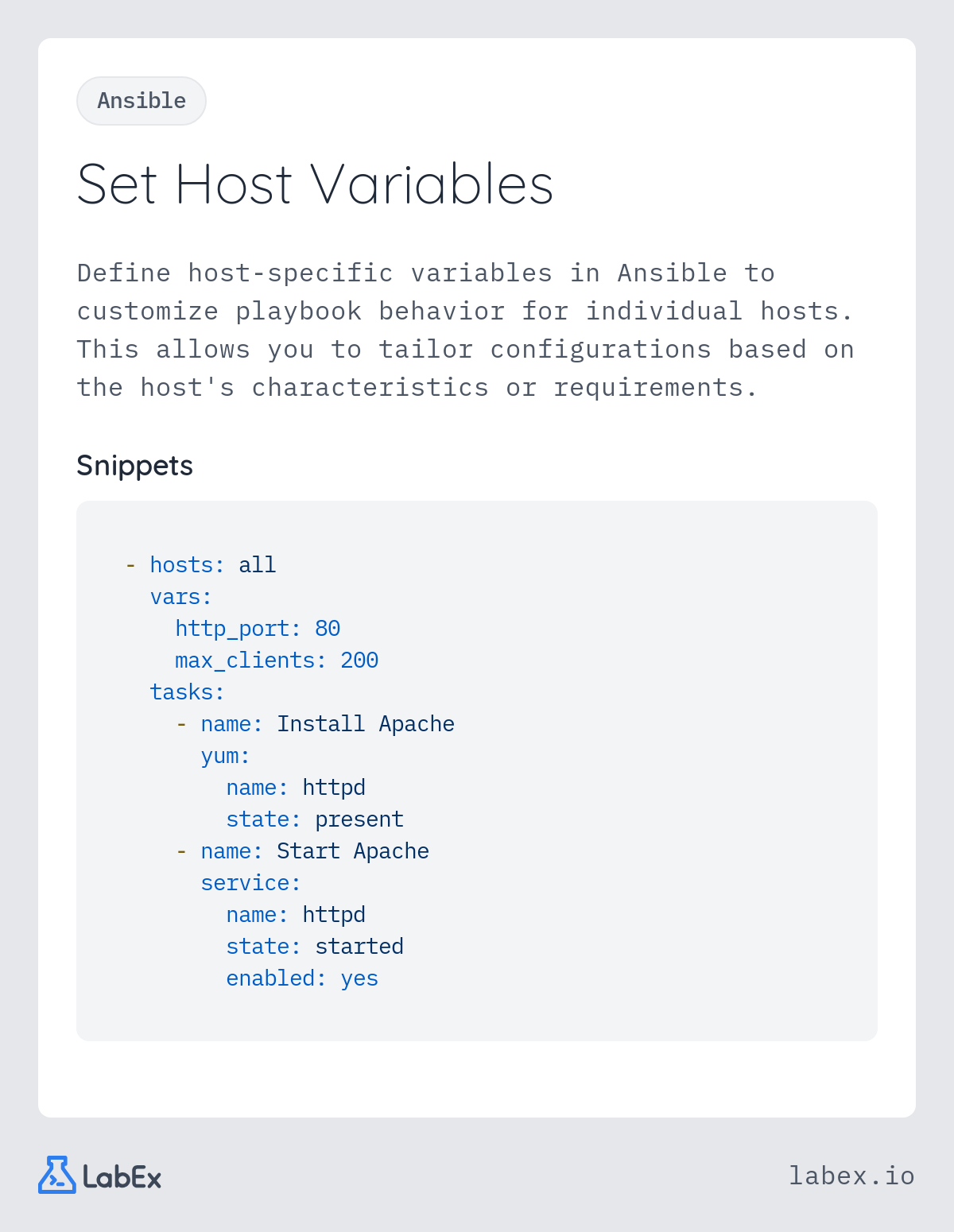
Set Host Variables
Define host-specific variables in Ansible to customize playbook behavior for individual hosts. This allows you to tailor configurations based on the host's characteristics or requirements.
Explore our curated collection of programming flashcards. Each card contains practical examples and code snippets to help you master programming concepts quickly.